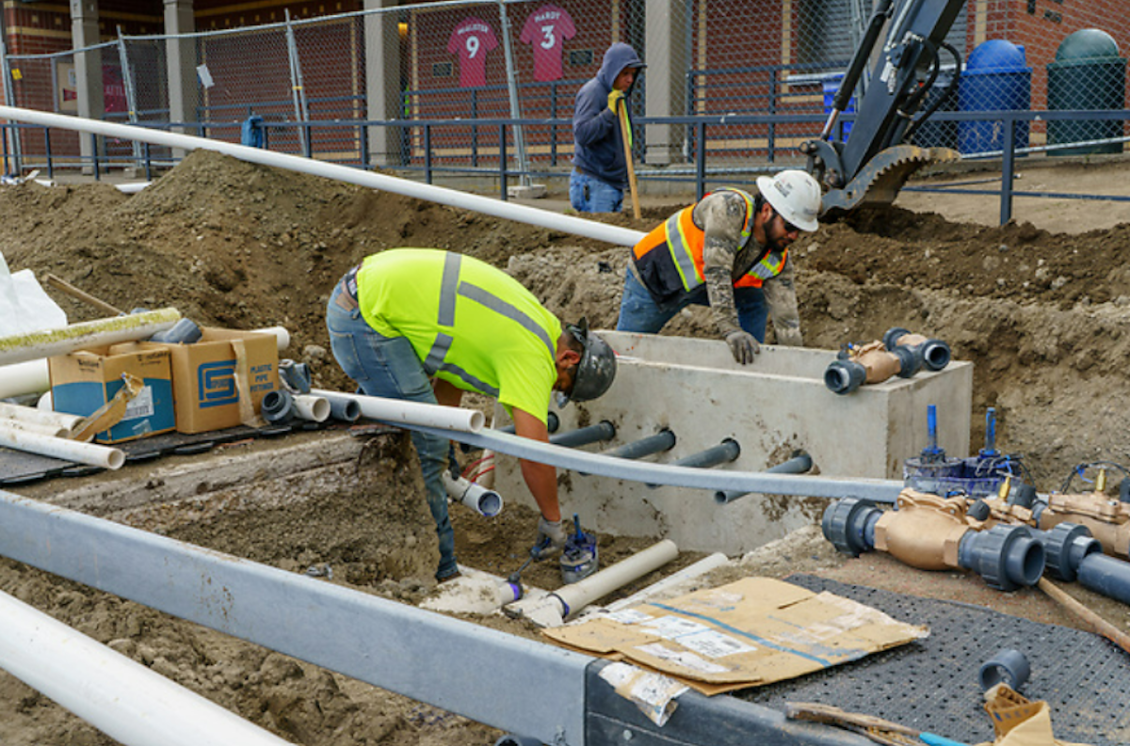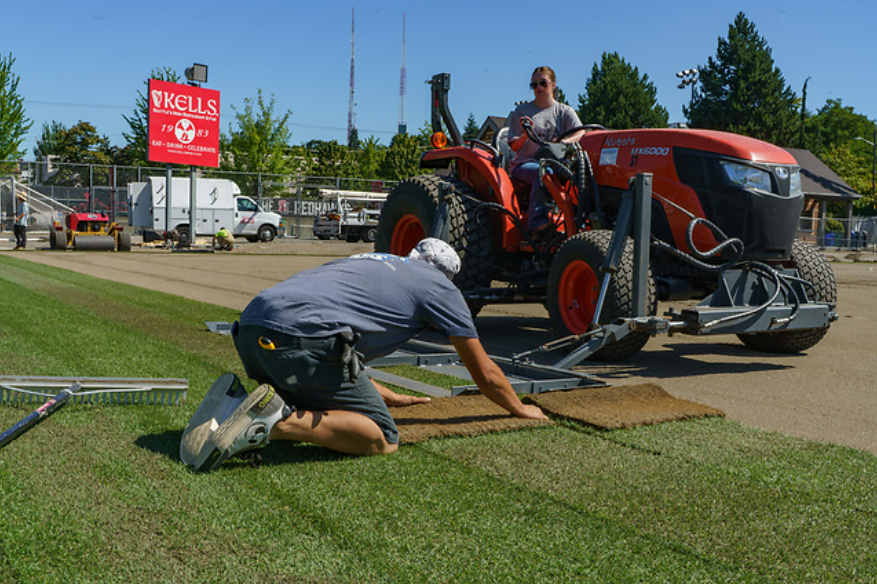/142x0:2258x1350/prod01/channel_34/media/seattle-university/images/Soccer-field-story.JPG)
Renovations this summer position SU to host World Cup 2026 practices.
What do you do when the world is about to lay its eyes on you for the first time? You get a makeover, obviously. At least, that’s what Championship Field has been doing in preparation for Seattle University serving as a practice facility for the 2026 FIFA Men’s World Cup, co-hosted by the United States, Canada and Mexico next summer.
And while Championship Field—home to SU’s soccer teams—was due for a facelift anyway, nothing like the world’s largest sporting event to move that work forward.
Nathan Gregory, SU’s Director of Facilities Planning and Real Estate, says when discussions with FIFA began, soccer’s international governing body sent experts to evaluate Championship Field, including the pitch’s drainage, traction and dimensions, among many other requirements.
“Thankfully, the long-term maintenance needs that we knew we needed to address aligned nicely with the improvements that FIFA would require, leading us to do the pitch replacement this summer,” Gregory says.
To replace the turf, contractor Premier Field Development removed the grass and about 8-9 inches of soil, installed conduit under the field, then replaced the soil and finally the new turf, which was installed in mid-July.
 Crews dig out underneath the turf to prepare the field.
Crews dig out underneath the turf to prepare the field.
Not surprisingly, when evaluation the field, drainage was one of the biggest issues. Years of use slowly degrades the playing surface for a natural grass field. A combination of years of use compacting the soil and build-up of organic material meant water didn’t drain through as well as it used to.
Bellevue engineering firm D.A. Hogan & Associates were hired to collaborate with SU’s Facilities and Athletics departments to identify other needed upgrades including adding safety netting to the south end of the field to prevent errant balls from reaching the street and installing conduit under the field to improve overall operations.
“I’m really happy for Athletics, this is going to be a huge boost for them,” says Shannon Britton, SU’s Assistant Director for Grounds and Waste Management, who is serving as the Project Manager on the upgrades. “It’s gone really smoothly and we’re … really happy with the end result.”
Most of FIFA’s direct involvement came early on in the project. They tested and evaluated the condition of the grass, for example bouncing soccer balls to see how high they bounced, and using a device stuck into the soil to test traction.
They also determined that due to the runoff needs around the perimeter, the current track wouldn’t work and so it is now covered with synthetic turf, making it still suitable for the community to use but also meeting FIFA safety standards.
“In general FIFA was pretty impressed with the field,” Gregory says.
The cherry on top of the renovation was the installation of a new video scoreboard. While the same size as the current version, it has more capabilities including showing instant replays and video advertisements.
Of course, all of this comes with a price tag. Fortunately, there are multiple partners in the project as Washington state provided matching funds to support the infrastructure improvements and FIFA will pay to rent the space for what is expected to be five days of use over the span of about a month.
 The new turf being installed in mid-July.
The new turf being installed in mid-July.
The entire project is expected to be completed by the end of July, which was key as the women’s soccer team’s first match—now as a member of the West Coast Conference—is Aug. 9. That’ll give the field about 10 months to get worked in before the World Cup rolls into town.
“It’ll be interesting to see what it’s like to have the biggest sports organization in the world coming around our campus,” Gregory says. “It will be exciting while they’re here, but it’s a fantastic thing for us to have half of the upgrade costs covered and then get to be part of such a huge worldwide event.”
/63x0:1068x635/prod01/channel_34/media/seattle-university/news-amp-stories/images/SU-TW-history-photo-1130X635.jpg)
/0x42:2400x1558/prod01/channel_34/media/seattle-university/news-amp-stories/images/Newsroom-Tarik-copy.jpg)
/0x42:2400x1558/prod01/channel_34/media/seattle-university/news-amp-stories/images/alex-roldan-legendary-photo.jpg)